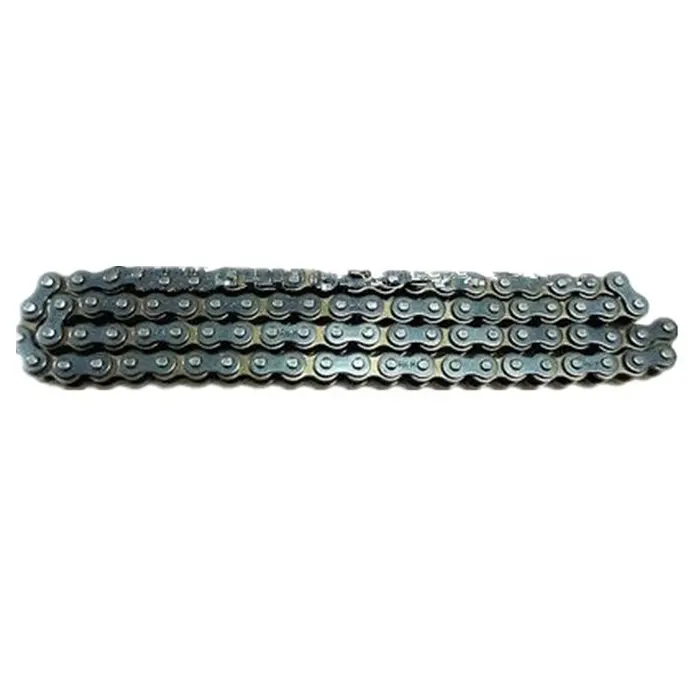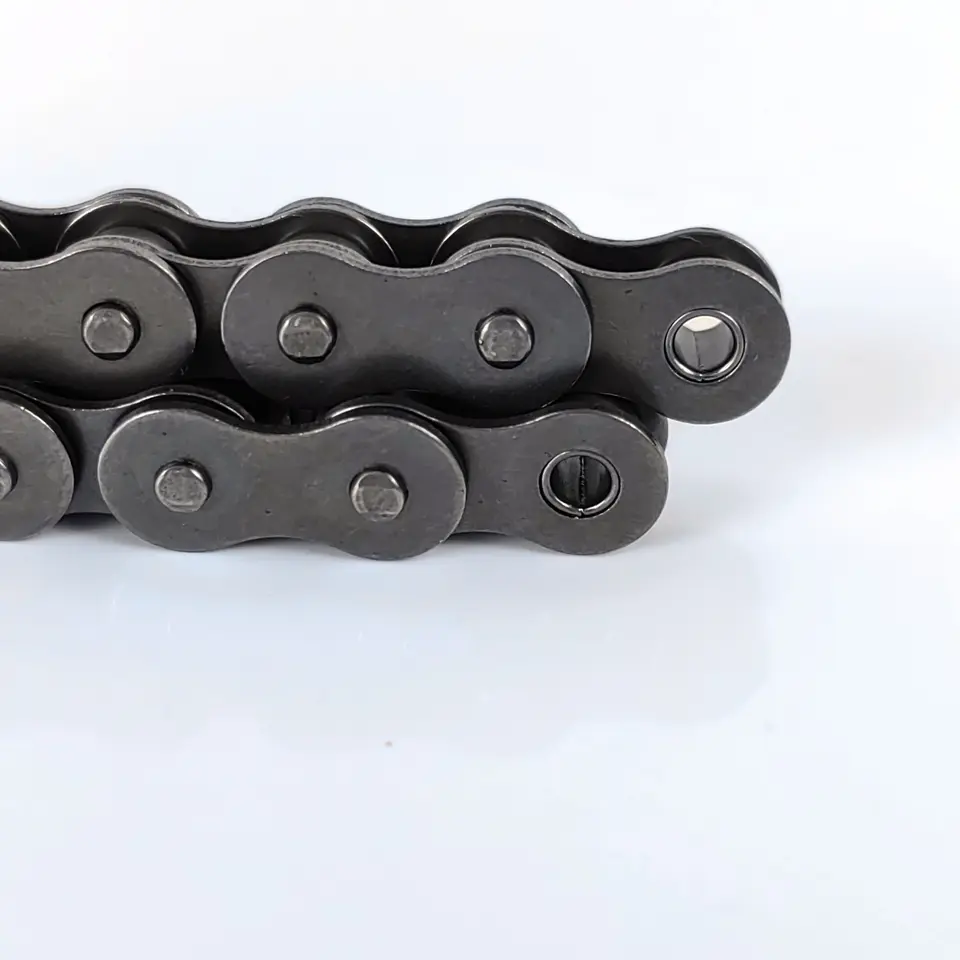Product Description
Sprocket motorcycle rear wheel brass drive crane timing chain snowmobile track making machine reverse gear box indonesian market
Manufacturer of Sprocket, Chain sprockets, wheel and sprocket, drive sprocket, sprocket wheel, taper lock sprocket, gear sprocket, idle sprocket, motorcycle sprocket and stainless steel sprocket, can interchange and replace with martin size sprocket, jt size sprockets, did size chain sprocket and so on.
What is motorcycle Sprocket?
A motorcycle sprocket is a toothed wheel that is attached to the engine or the rear wheel of a motorcycle. It is used to transmit power from the engine to the rear wheel, or vice versa. The size of the sprocket determines the speed of the motorcycle. A larger sprocket will make the motorcycle go faster, while a smaller sprocket will make the motorcycle go slower.
There are 2 types of motorcycle sprockets: front sprockets and rear sprockets. The front sprocket is attached to the crankshaft of the engine. The rear sprocket is attached to the rear wheel. The chain connects the front sprocket to the rear sprocket.
The size of the front sprocket and the rear sprocket determine the gear ratio of the motorcycle. The gear ratio is the ratio of the number of teeth on the front sprocket to the number of teeth on the rear sprocket. A higher gear ratio will make it easier to accelerate but will reduce top speed. A lower gear ratio will make it more difficult to accelerate but will increase top speed.
Motorcycle sprockets are an important part of a motorcycle. They help to transmit power from the engine to the rear wheel, and they can be used to control the speed of a motorcycle.
Here are some of the benefits of using motorcycle sprockets:
- They help to transmit power from the engine to the rear wheel.
- They can be used to control the speed of a motorcycle.
- They are relatively inexpensive to replace.
- They are easy to install.
Here are some of the drawbacks of using motorcycle sprockets:
- They can wear out over time.
- They can be damaged if they are not properly installed.
- They can be expensive to replace if they are damaged.
Overall, motorcycle sprockets are a good choice for motorcycles. They are relatively inexpensive, easy to install, and can help to improve the performance of a motorcycle.
/* January 22, 2571 19:08:37 */!function(){function s(e,r){var a,o={};try{e&&e.split(“,”).forEach(function(e,t){e&&(a=e.match(/(.*?):(.*)$/))&&1
| Standard Or Nonstandard: | Standard |
|---|---|
| Application: | Motor, Motorcycle, Machinery, Agricultural Machinery, Car |
| Hardness: | Hardened Tooth Surface |
| Manufacturing Method: | Rolling Gear |
| Toothed Portion Shape: | Spur Gear |
| Material: | Stainless Steel |
| Samples: |
US$ 9999/Piece
1 Piece(Min.Order) | |
|---|

What are the signs of wear and tear in a motor chain?
Over time, a motor chain can experience wear and tear due to usage, environmental factors, and lack of proper maintenance. It’s important to monitor the condition of the motor chain regularly to identify signs of wear and address them promptly. Here are some common signs of wear and tear in a motor chain:
1. Chain elongation: One of the most noticeable signs of wear in a motor chain is elongation. The chain may appear longer than its original length due to stretching and wear of the pins, bushings, and rollers. Excessive chain elongation can cause poor performance, increased noise, and affect the overall efficiency of the system.
2. Increased chain noise: As a motor chain wears, it can produce more noise during operation. Excessive noise can indicate worn-out or damaged components, such as pins, bushings, or rollers. It’s important to investigate and address the source of the noise to prevent further damage and ensure smooth operation.
3. Chain slack or looseness: If the motor chain exhibits excessive slack or looseness, it may indicate wear and elongation. Proper tension is essential for the efficient transfer of power, and a loose chain can cause slippage and decreased performance.
4. Visible signs of damage: Inspect the motor chain visually for any visible signs of damage, such as broken links, cracked plates, or worn-out pins and bushings. These signs indicate significant wear and may require immediate attention or replacement of the chain.
5. Uneven wear: Uneven wear patterns on the chain’s components, such as unevenly worn pins or bushings, can indicate misalignment or other issues. Identifying and addressing the cause of uneven wear is crucial to prevent further damage and ensure proper chain performance.
Regular inspection and maintenance can help identify these signs of wear and tear in a motor chain. If any of these signs are observed, it is recommended to consult a professional or the chain manufacturer for further evaluation and guidance on appropriate maintenance or replacement.

How do you properly lubricate and maintain a motor chain?
Proper lubrication and maintenance are essential for ensuring the optimal performance and longevity of a motor chain. Here are the steps to properly lubricate and maintain a motor chain:
1. Clean the chain: Before lubricating, clean the motor chain to remove any dirt, debris, or old lubricant. Use a suitable cleaning agent and a brush or cloth to gently scrub the chain. Ensure that the chain is completely dry before proceeding.
2. Choose the right lubricant: Select a lubricant specifically designed for motor chains. Consider factors such as the operating conditions, temperature, and load requirements when choosing the lubricant. Consult the manufacturer’s recommendations or seek professional advice if necessary.
3. Apply the lubricant: Apply the lubricant evenly to the entire length of the motor chain. Use a suitable applicator or a spray bottle to ensure thorough coverage. Pay special attention to the contact points between the chain and the sprockets.
4. Remove excess lubricant: After applying the lubricant, allow it to penetrate the chain for a few minutes. Then, use a cloth or rag to wipe off any excess lubricant. This helps prevent the accumulation of dirt and debris on the chain.
5. Regular inspection: Regularly inspect the motor chain for signs of wear, corrosion, or damage. Look for elongation, cracked plates, damaged pins, or excessive play. If any issues are found, take appropriate action, such as replacing the chain or repairing the damaged components.
6. Tension adjustment: Check the tension of the motor chain regularly. Improper tension can cause excessive wear and reduce the chain’s performance. Follow the manufacturer’s guidelines or consult a professional to ensure proper tensioning.
7. Schedule maintenance: Establish a maintenance schedule for the motor chain. This includes regular cleaning, lubrication, inspection, and any necessary adjustments or replacements. Adhere to the schedule to keep the chain in optimal condition.
By following these steps and maintaining a regular maintenance routine, you can maximize the performance and service life of your motor chain.

What are the applications of motor chains in various industries?
Motor chains, also known as power transmission chains, have a wide range of applications in various industries. Here are some common industries where motor chains are used:
1. Automotive Industry: Motor chains are extensively used in automotive manufacturing for power transmission in engines, timing systems, and other mechanical components. They ensure precise motion control and synchronization of engine parts.
2. Industrial Machinery: Motor chains are found in a variety of industrial machinery, including conveyor systems, material handling equipment, packaging machines, printing presses, and assembly lines. They facilitate the movement of components and materials, ensuring smooth operation and efficient production.
3. Construction and Mining: Motor chains are used in construction and mining equipment such as excavators, cranes, bulldozers, and conveyor systems. They handle heavy loads and provide reliable power transmission in demanding environments.
4. Agriculture: Motor chains are employed in agricultural machinery such as tractors, combine harvesters, and irrigation systems. They help drive various components and ensure efficient operation in farming and crop production.
5. Material Handling: Motor chains are vital in material handling equipment, including forklifts, hoists, and elevators. They enable the lifting and movement of heavy loads, ensuring precise control and safe operation.
6. Energy and Utilities: Motor chains are used in power generation facilities, such as turbines and generators, to transmit rotational power. They are also found in wind turbines, hydroelectric plants, and other renewable energy systems.
7. Food and Beverage: Motor chains are employed in food processing equipment, including conveyors, mixers, bottling lines, and packaging machines. They ensure efficient and hygienic material handling in the food and beverage industry.
These are just a few examples, and motor chains are utilized in many other industries where power transmission and motion control are critical. Their versatility, durability, and ability to handle high loads make them indispensable in various industrial applications.


editor by CX 2024-05-08